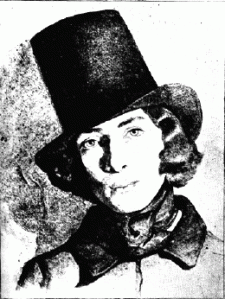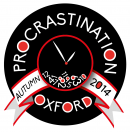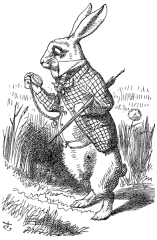Around 1840 it was considered elegant to take a tortoise out walking. This gives us an idea of the tempo of flânerie —Walter Benjamin
Flânerie, the art of the flâneur, means strolling, loitering, sauntering with no fixed intent but simply looking. Is the flâneur an exotic cousin of the procrastinator? That depends where you stand, or wander.
Insufferable idleness
Vagrants and prostitutes (the other kind of streetwalker) were increasingly unpopular with the nineteenth-century Parisian authorities. Contemporaries were quick to suspect this new figure too. As one dictionary of ‘popular’ French usage from 1808 defines it, un grand flâneur is
a lazybones, a loafer, a man of insufferable idleness, who doesn’t know where to carry his trouble and his boredom.
(We still see this today: the puritanical workaholics of the OED call him ‘a lounger or saunterer, an idle “man about town”.’ Ouch.) But over the course of a century flânerie was to develop its own rich philosophy.
Baudelaire and Benjamin: a pair of loafers
Though the French verb flâner is considerably older, the invention of the flâneur as icon is often credited to Baudelaire and his famous essay ‘The Painter of Modern Life’ (1863). Dandified but incognito, he strolls amongst the crowds of Paris, just behind his pet tortoise:
The crowd is his element, as the air is that of birds and water of fishes. His passion and his profession are to become one flesh with the crowd. For the perfect flâneur, for the passionate spectator, it is an immense joy to set up house in the heart of the multitude, amid the ebb and flow of movement, in the midst of the fugitive and the infinite. To be away from home and yet to feel oneself everywhere at home; to see the world, to be at the centre of the world, and yet to remain hidden from the world—such are a few of the slightest pleasures of those independent, passionate, impartial natures which the tongue can but clumsily define…
The flâneur, its exponents argued, is a passionate observer of the human species, ‘botanising on the asphalt’ (Benjamin). He is an urban native, a connoisseur—Balzac called the activity ‘gastronomy of the eye’—of the great metropolis and its glamorous manmade ‘sensorium’. The wandering Wordsworth is denied flâneurhood: it is impossible in soggy Cumbria.
The flâneuriat argued that they concealed themselves behind their tortoises; their indolence was a mask. They were quick to differentiate themselves from the dreaded archetypes with which they might (somewhat justifiably) be confused: the idler, the self-absorbed dandy, the tourist, and—heavens forfend—the undiscriminating, slackjawed badaud or gawker. This ‘man of the world’ (and it is invariably a man) does not merely gawp or potter: he is, in the common image, a detective: it’s no accident that Baudelaire became obsessed by Edgar Allen Poe and his short story ‘The Man of the Crowd‘ (1840). The flâneur is an ethnographer with less stamina and better hats.

The impossible flâneuse? George Sand (Baudelaire tellingly wrote her off as having the morals of ‘janitresses and kept women’)
Free radical?
So is the flâneur another Bartleby, an alternative icon in a world of capitalist drudgery? Benjamin certainly hoped so, resurrecting him as the archetype of urban modernity, empathetic and eye-opening in the face of alienation. Clearly the flâneur presents some small threat of deviancy, or else those sensitive lexicographers would be more relaxed.
But if he isn’t a simple idler or dandy, he is at best an ambiguously radical figure: a man of leisure, well-dressed, gregarious and late-rising. His love of window-shopping and department stores is a little too close to naked consumerism for comfort—and once women get into these activities they lose all their masculine charm—while his dismay at being seen as a mere gawper or tourist belies his pathological snobbery. The flâneur may be a man of the crowd, but he is no man of the people (‘Ce grand malheur, de ne pouvoir être seul,’ sighs the epigraph to Poe’s story).
It is no accident that flânerie flourished in the great age of boredom (incidentally a word which was not ‘invented’ by Dickens, another famous city wanderer). For his spontaneity and freedom of action, Benjamin himself bracketed the flâneur with such unlovably idle figures as the the gambler, the drug addict and the student (and experimented with drugs and gambling himself). Not only managing but actually thriving in boredom he credited as perhaps the flâneur’s greatest contribution in the age of bureaucracy. The gambler merely kills time, but the flâneur ‘charges time like a battery’ through his attention to novelty, the transient and the ephemeral.
Yet here again we see the flâneur is no radical: his efforts are not especially political, but aesthetic and nostalgic. He does not so much escape boredom and consumerism as revel in it, marking the transition between the dandy of good taste and the dandy who relishes camp with detached, apolitical irony. Against alienation he can set only oh-so-postmodernist fragments of experience, a collapsing kaleidoscope. Is it any wonder that Walter Benjamin was unable to finish his project?
The undercooked flâneur
It is not as an anti-capitalist icon but as a heroic myth for writers that the flâneur owes his survival. He is, says one commentator, ‘the indulgent fantasy of the writer not writing but whose observing eye nonetheless transmits directly to the novelist’s page’, daydreaming his way to a critique of modernity. The problem is that this shortcut often fails to work. Several of the great flâneur-writers became crippled by perfectionism, that handmaiden of procrastination. Benjamin’s own massive work on the Parisian arcades, like Robert Musil’s vast, ambivalent and false-start-filled Vienna novel The Man Without Qualities, was never finished. The cities themselves got the better of the works.
In the end the flâneur met a Rasputin fate, killed by tortoise-crushing traffic, the democratization of city lounging and travel writing, the feminization of his favoured pastimes, and his own internal contradictions. As early as 1877 the writing was on the wall: the feminine word flâneuse appeared—to designate a kind of chaise longue.
Nonetheless, though nineteenth-century incarnations of the flâneur may have missed it (and even Benjamin could not save him), there is radical potential in urban drifting. Ditching the cigar and top hat, its heirs were Britain’s critical psychogeographers, Guy Debord and the Situationist International—as our speaker Kamel Boudjemil (Sorbonne) will discuss on 2 July [sign up here today].





 There is something somnolent in the very air. ‘In Oxford,’ Marías continues, ‘just being requires such concentration and patience, such energy to battle against the natural lethargy of the spirit, that it would be too much to expect its inhabitants actually to stir themselves.’ For centuries the denizens of Oxford have done anything but work. They fornicate and take drugs (Kingsley Amis, Jake’s Thing), ‘snooze…in the arms of Duke Humphrey’ (Dorothy L. Sayers, Gaudy Night), wander the meadows and cart around teddybears. And, worst of all, they write Oxford novels. There were 533 by 1989 alone.
There is something somnolent in the very air. ‘In Oxford,’ Marías continues, ‘just being requires such concentration and patience, such energy to battle against the natural lethargy of the spirit, that it would be too much to expect its inhabitants actually to stir themselves.’ For centuries the denizens of Oxford have done anything but work. They fornicate and take drugs (Kingsley Amis, Jake’s Thing), ‘snooze…in the arms of Duke Humphrey’ (Dorothy L. Sayers, Gaudy Night), wander the meadows and cart around teddybears. And, worst of all, they write Oxford novels. There were 533 by 1989 alone.


